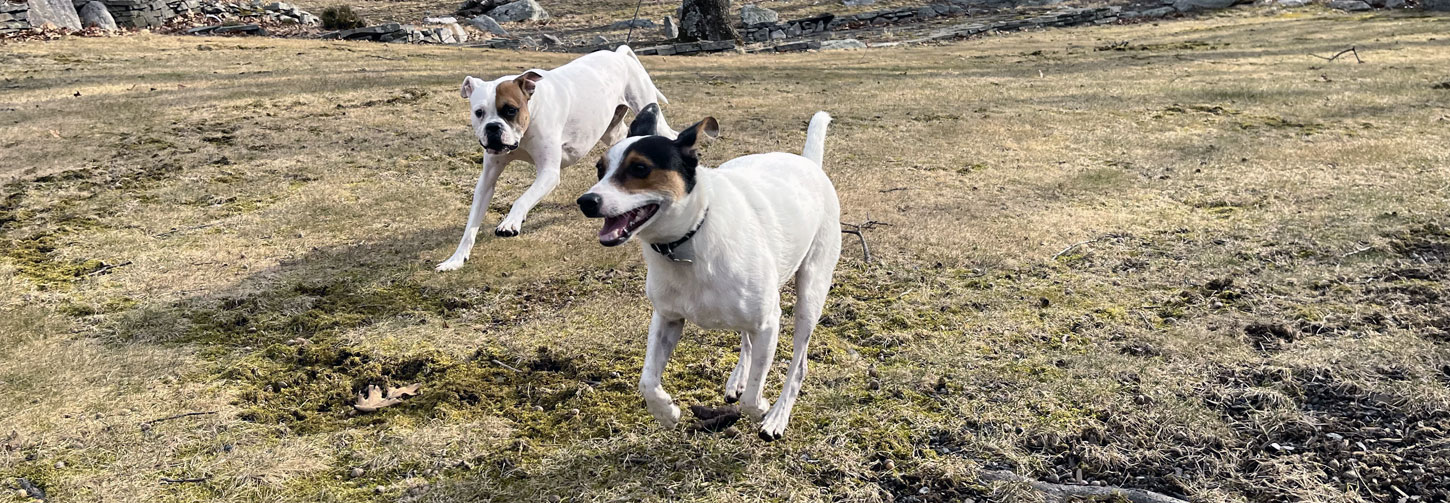An appropriate dog greeting can be essential in helping a dog develop friendships and bond with other dogs.
During greetings, dogs use scent and body language to assess whether the other dog is a potential threat.
A poor introduction can lead to conflict, so when introducing dogs who will be spending time together, it’s best to keep the greeting and initial time spent together neutral by proceeding gradually.
Whether you have a dog who appears very tolerant of other dogs and appears to have great social skills or one that might struggle and be more “selective” with their canine friends, these general tips will help any parent cultivate successful introductions between canines.
Start Outside At A Distance
Make arrangements to meet the other dog outside. A park or parking lot is ideal for dogs who may need a lot of distance. Both dogs should be on-leash. Clearly communicate to the other guardian so you have a plan for the introduction. If you suspect you’ll need to start very far away, ask the other guardian to call you so you can communicate on the phone with each other (use headphones!) while walking.
Avoid letting the dogs rush into a greeting or meet face-to-face right away. Instead, pick a distance at which both dogs are comfortable walking, sniffing but are aware of the other dog’s presence. Begin there, walking parallel to the other dog or by doing some following of the other dog at that distance.
Parallel Walking or Following
Which works better for the dogs you have? You may have to do some trial and error. Parallel walking is where the dogs walk parallel to each other, with at least 10 feet of distance between them, so they cannot rush towards each other or greet face-to-face Following is where one dog follows the other. After a brief period of doing that, switch which dog is leading and which is following.
Sniffing
Sniffing helps reduce stress and arousal so should be encouraged. Nothing to sniff? Toss treats to facilitate it! Always toss treats away from the other dog and at a safe distance so you aren’t adding in additional arousal for competition. Encourage sniffing and exploration, including investigating where the other dog has urinated.
Use Time to Your Advantage
Don’t rush this, the more time two dogs spend in the presence of each other, both displaying comfortable body language, the better the introduction is going, even if they haven’t said ‘hello’ yet! Arousal and excitement about the novelty decrease with time. If you have a dog-selective dog, you might stop here for your first meeting and repeat then progress to the next steps a few days or hours later.
Close the Gap
Things are going well, and you’re ready to bring the dogs closer for a greeting. This means you are NOT seeing either dog: growl/lunge or bark, fixate or stare without being able to disengage, stiff/erect tail, direct orientation/facing the other dog head on, pulling heavily towards or complete avoidance. Hopefully you ARE seeing: loose bodies, non-direct orientation, sniffing and maybe even some air scenting towards the other dog, soft eyes and face when looking at the other dog and maybe even a loosely wagging tail. Confirm with the other parent they are also feeling comfortable, hopefully they know their dog.
Greeting Face to Face
Since your dog is on leash, which is not a natural way to greet, you’ll want to approach this carefully. (Note: if your dog is known to be leash reactive or to react when they feel pressure on the leash, avoid doing this yourself and work instead with a trainer.)
By this point, the two dogs should be about 10 feet away from each other. Once you’ve confirmed with the other guardian they’re comfortable proceeding, simply allow the dogs to meander closer to each other on loose leashes organically, avoiding straight lines and creating a curved, gradual approach.
They will most likely approach each other eventually if they are interested in greeting. If they do not, don’t force it. Take note of what you see, are they purposely avoiding each other? If they do greet each other, usually that will look like: quick facial sniff, then a rear sniff. Keep the leash as loose as possible during this hello. When they separate, allow them to take space and break. Continue to observe, and remember that a sudden change in orientation or body language may signal non-friendly intent.
Successful dog introductions take patience, awareness, and respect for each dog’s comfort level. By following these steps, you can set your dog up for positive social interactions and safe, stress-free friendships.





